In September 1842, an American animal trainer arrived in Newport as part of his Welsh tour. He had visited Chepstow, Monmouth and after Newport he would visit Cardiff and each time he visited a town it would be a spectacle to behold.
He would arrive in a grand procession, tour the streets of the town capturing the attention of his audience.
Van Amburgh is a good judge of human nature he is as successful a master of the various modes of fixing public attention and of profitably directing public curiosity to the attractions of his arena by out of door display, as he is in the subjugation of the savage race.
After his tour of the town he would arrive at his arena to begin his grand show which would attract all walks of life including the gentry.
Who Was Van Amburgh?
Isaac A. Van Amburgh (1808–1865) was a pioneering American animal trainer often referred to as “The Lion King.” Born in Fishkill, New York, he began his career cleaning cages at a traveling menagerie before breaking into the spotlight in 1833 by becoming the first person to place his head inside a wild lion’s mouth during a public performance.
His daring stunts, such as entering a den with lions, tigers, and leopards and riding a lion while forcing a lion and a lamb to lie peacefully together, captivated audiences. He styled himself theatrically—draped in Roman or gladiatorial garb—and often used religious rhetoric, citing Genesis to frame his domination of beasts as divinely sanctioned.

“One can never see it too often,” she wrote in her journal for 29 January 1839. “Van Amburgh … has great power over the animals, & they seem to love him, though they are in great fear of him. He took them by their paws, throwing them down & making them roar, & he lay upon them after enraging them.”

Van Amburgh's Visit
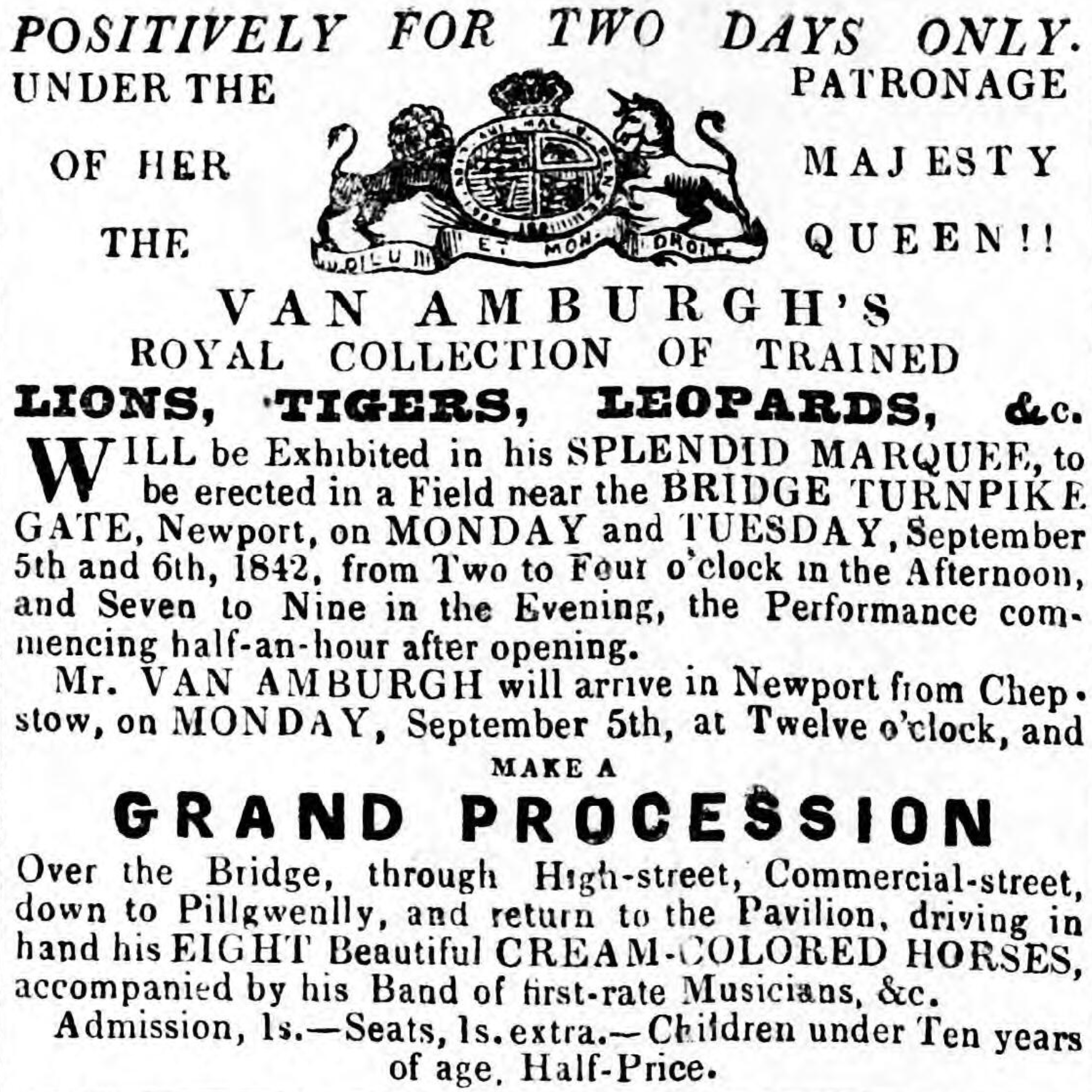
As part of his Welsh tour, Mr Van Amburgh and his company travelled from Chepstow to Newport. Unfortunately for him, he would have been one finger lighter after losing it whilst in Falmouth.

He would be performing on September 5th and 6th in a field near the 'Bridge Turnpike Gate'. The review below taken directly from the Merlin revealed it was off the Caerleon Road but doesn't give an exact location.

'A Review from the Merlin'
On Monday morning last the inhabitants of this town were on the qui vive, in anticipation of the arrival of the great "Forest King," whose avant courier, a fine and truly sagacious elephant had previously arrived.
The leading thoroughfare of the town was crowded, and the steps of all sight seekers were directed towards the Bridge — the streets wore a holiday appearance-— and the windows in the entire line from the bridge to the Salutation displayed gaily dressed and anxious spectators.
Precisely at twelve o'clock, the swell of distant music was heard, and soon the "Lion Tamer" was seen driving eight beautiful cream-coloured horses with as much facility and apparent command as Prince Albert manages his phaeton ponies.

His carriage contained a band of musicians, in tasteful uniform, performing martial airs on brass instruments and he was followed by six caravans, of light and novel construction, each drawn by fine horses, amounting to twenty-two in number. Expressions of admiration and wonder were heard on every side.
"The observed of all observers" drove his magnificent team along, and the boldness and startling novelty of the achievement had a magical effect upon the town. Van Amburgh is a good judge of human nature he is as successful a master of the various modes of fixing public attention and of profitably directing public curiosity to the attractions of his arena by out of door display, as he is in the subjugation of the savage race.
The expert charioteer drove on to Pillgwenlly, and returned at a pace of about ten miles an hour, to the toll gate, and from thence to the King's Head hotel, into the yard of which he turned his eight steeds with the ease and tact of an experienced whip.
At two o'clock, the spacious pavilion, which bad been erected during the morning in a field on the Caerleon-road, as if by magic or the agency of Aladdin's lamp, was opened, and in a short time presented one of the most brilliant displays of fashion ever witnessed in Newport.
Upwards of four hundred ladies and gentlemen, comprising all the gentry of the neighbourhood, and many from distant towns, were assembled in the reserved seats, whilst the arena was crowded.
The performances consisted of a succession of feats by the half-reasoning elephant — a most docile and intelligent creature, that, with extraordinary sagacity, almost anticipated the commands of his keeper.
This was succeeded by monkey jockeyship on a singularly sagacious pony, whipped about by a tall Kentuck-looking genius — "half alligator, half man."
Much laughter was caused by the adroitness of the monkey in evading the efforts of the pony to unseat him, and by his pulling the ears and dismounting any lad that was induced t0 ride. This part of the amusements was certainly very unworthy of an exhibition of such pretensions.
At the close of this caricature of the feats of the circus, Van Amburgh, gorgeously and picturesquely dressed, bounded into a den, in which were a full grown lion, a noble Bengal tiger, and several leopards. After gracefully attitudinizing for some time, he fearlessly laid hold ot the head ot the royal brute, and presented a scene so bold and classical in manner and grouping as might well summon up school recollections of the fabled Hercules and the Nemean lion. His rencontres with the tiger and the leopards, were equally brave and surprising.
With the occasional evidences of the existence of their innate ferocity, the lion-king forced these terrific beasts into the most abject submission. He pulled open their mouths, showed their formidable teeth, gently patted them when subservient, and dashed them to the ground on the appearance of anger. It was truly astonishing to witness the entire mastery which he possessed over such powerful creatures, each of which could in an instant have torn him to atoms.
The scene, with feats of additional interest, was renewed in the second den, to the astonishment of the audience. This closed the exhibition, which was repealed in the evening, and twice on Tuesday, to crowded houses, and the great Van Amburgh left for Cardiff on his Welsh tour, on Wednesday morning.
— Monmouthshire Merlin, 10th September, 1842

Another Menagerie?
At the same time as Van Amburgh was touring Wales, was there another menagerie following him around?
Wombwell's Royal Menagerie was started by George Wombwell who had a passion for collecting animals including elephants, giraffes, a gorilla, a hyena, kangaroo, leopards, 6 lions, llamas, monkeys, ocelots, onagers, ostriches, panthers, a rhino, 3 tigers, wildcats and zebras.

He expanded his menageries and had three travelling around the country and in 1842 he entertained Queen Victoria.

An article in the Monmouthshire Merlin on 3rd September, 1842 mentions that he was in Monmouth the same as Van Amburgh, presumably exhibiting his animals.
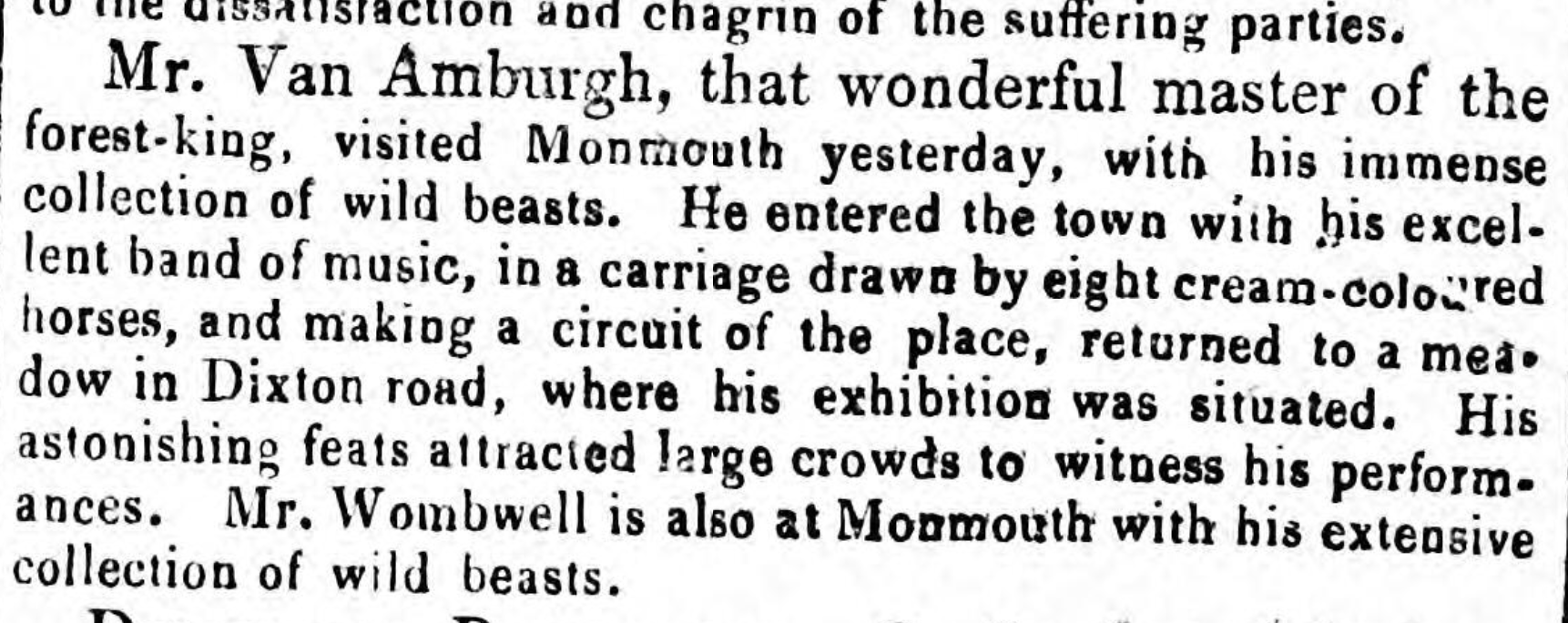
On 10th September, a few days after Van Amburgh had been in Newport, there was a report in the Monmouthshire Merlin about Mr Wombell being summoned before the magistrates twice for causing an obstruction with his menageries caravans. Interesting on the first occasion residents paid for the fine and it's believed the mayor of Newport paid the second fine.
I haven't been able to find a reference to whether Wombwell had exhibited his animals in Newport but you would presume he did.
On Saturday last, Mr. Womb well, proprietor of the wild beasts menagerie, was summoned before the magistrates by Mr. Wall, of the King's Head Inn, for allowing his caravans to obstruct the public road. The magistrates expressed their deep regret at being obliged, by the Act of Parliament, to fine the defendant, which thay did, however, at the very lowest amount. The fine and costs, 10s: 6d., were immediately paid by the residents near the menagerie.
Mr. Wombwell was summoned on Monday night, a second time, by Mr. Wall, for a nuisance, occasioned by his menagerie, when he was again fined with costs, 18s. Mr. Wombwell declared he would not pay the demand, and the Mayor stated his great reluctance in enforcing the penalty. The sum was immediately paid by a third party, which we believe was the worthy mayor himself. Considerable surprise and dissatisfaction were expressed by the public at these petty persecutions.
— Monmouthshire Merlin, 10th September, 1842


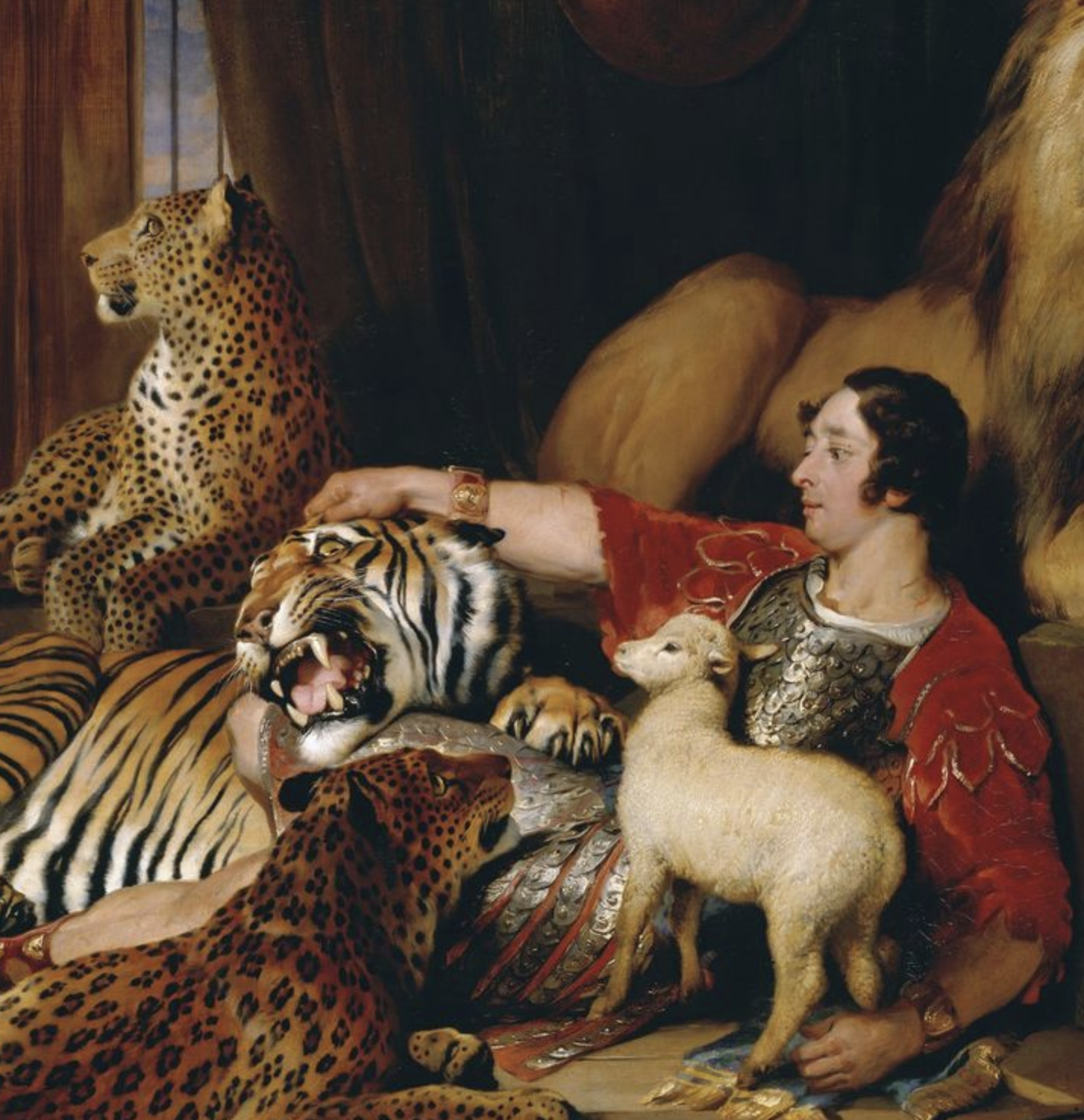
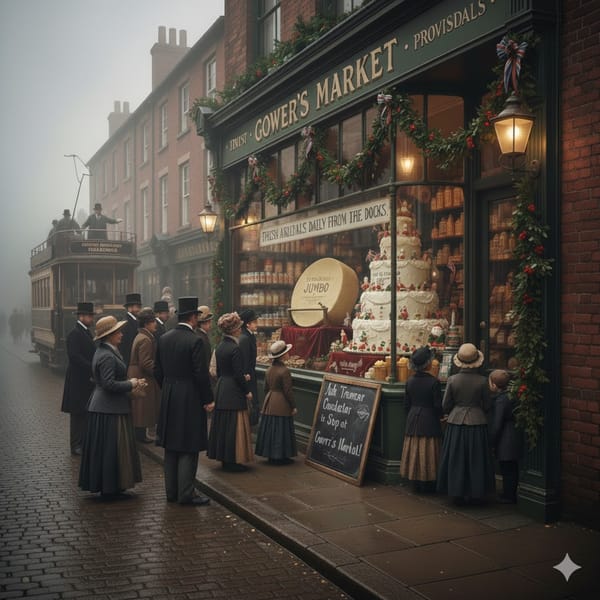

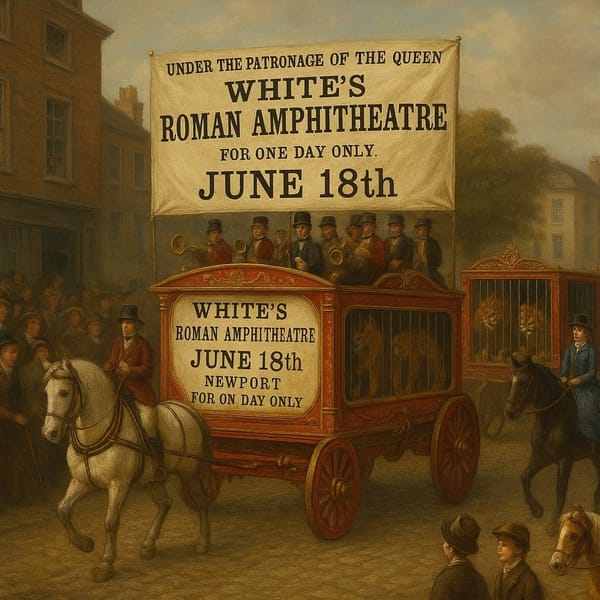
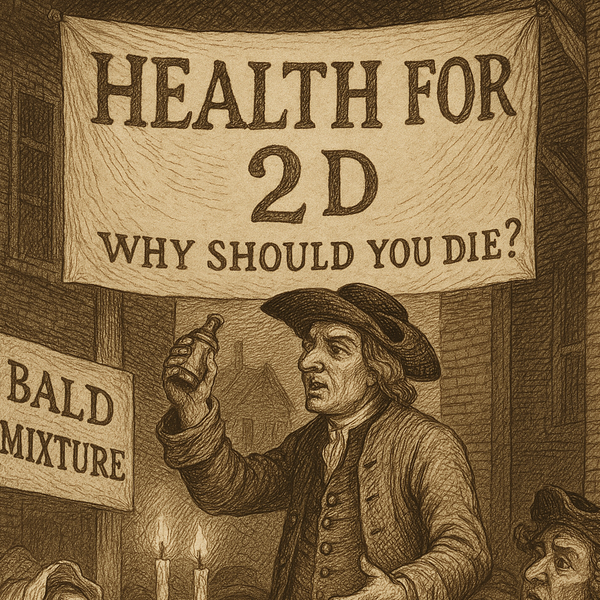
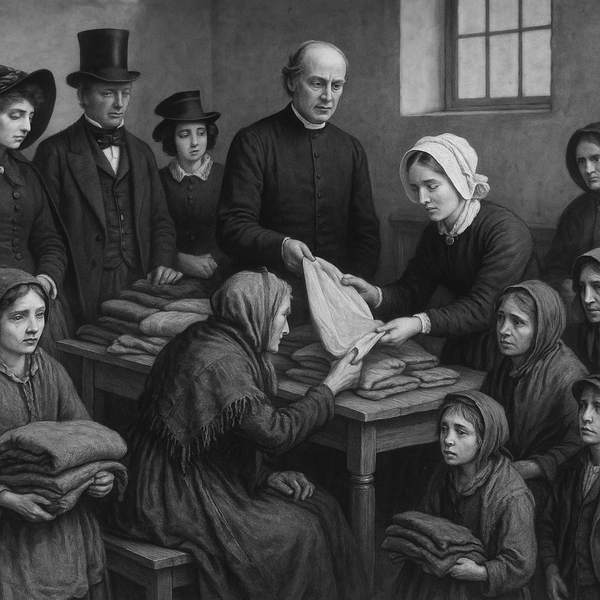
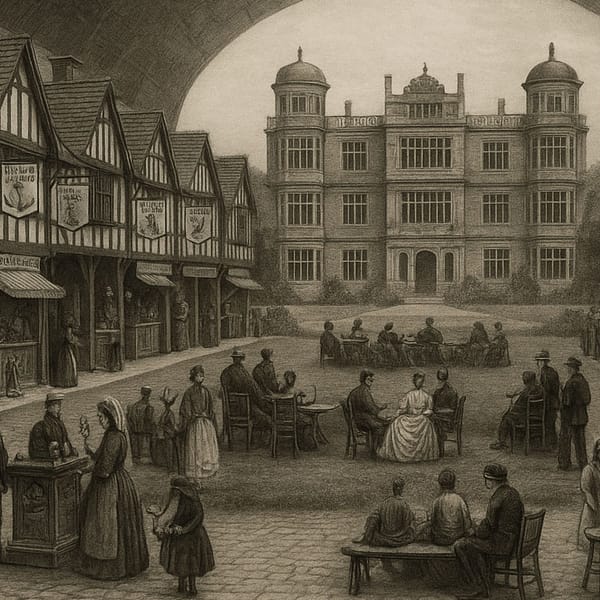
Member discussion